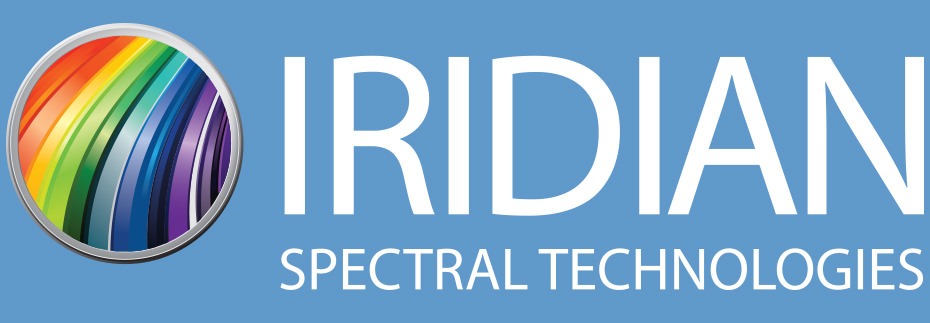Learning Center, Technical Notes
The wavefront error (WE) of a surface with an optical coating (“filter”) is ideally measured at the in-band wavelength of the filter. However, quite often this is not possible, requiring that the filter be measured at an out-of-band wavelength (typically 633 nm), assuming that the filter transmits (for transmitted WE, or TWE) or reflects (for reflected WE, or RWE) at this wavelength. This out-of-band TWE/RWE is generally assumed to provide a good estimation of the desired in-band TWE/RWE. It will be shown in this paper that this is not the case for a large class of filters (i.e., bandpass) where the group delay is significantly different at the in-band and out-of-band wavelengths and where the optical filter exhibits a thickness non-uniformity across the surface.
Application Notes, Learning Center
Raman spectroscopy probes the molecular vibrational and rotational modes of a material in order to detect and identify the material. Typically, laser light is incident upon the material and the scattered light is measured.
The excitation source (laser line) intensity is often to orders of magnitude greater than the Raman scattered signal. Therefore, edge pass (or notch) filters are required to block the Rayleigh scattered laser light while transmitting the red-wavelength shifted (Stokes) and/or the blue-wavelength shifted (Anti-Stokes) Raman scattered signal.
Application Notes, Learning Center
We live in the “Communications Age” – rapid access to information and connectivity to each other, anytime, nearly everywhere. But despite the massive strides that have been made in the past half century – from hardline telephony to the current ubiquitous wireless “smart” device connectivity – there is still further evolution to come that will necessitate extending the communications reach even further. While we have laid down a large physical infrastructure of wireline fiber-optic networks and wireless cellular base stations, the next advances in communications, 5G and machine-to-machine communications, will require “help from above” to blanket literally every corner of our planet with high speed, ultra-low latency, secure networks – telecom meet satcom.
Application Notes, Learning Center
LiDAR, short for light detection and ranging, uses pulsed lasers to accurately calculate distances as well as correctly detect the size and shape of objects. The high resolution of the information — LiDAR can resolve to a few centimeters from more than 100 meters away — and the ability to create accurate model three-dimensional images have made the technology critical in many applications. Some uses include autonomous vehicles and automobile crash avoidance, surveying, environment, construction, agriculture, oil and gas exploration, and pollution modeling.
Learning Center, Quality Assurance
Section 1502 of the Dodd-Frank Wall Street Reform and Consumer Protection Act, and the Securities and Exchange Commission Rules adopted in connection therewith, require certain corporations to report the use of “Conflict Minerals” in the manufacture of...
How To, Learning Center
How to Clean Optical Filters?While the Iridian filters are hard coated filters, the filters are delicate and should be handled with care to avoid or minimize direct contact with any other optics. All Iridian filters may be cleaned using the following recommended method.
How To, Learning Center
Optical filters are used in many applications and the surface figure and wavefront distortion requirements of filters are dependent on where and how they are used. Whereas band-pass or clean-up functionality may only require control of the transmitted wavefront, dichroic beam-steering/splitting filters or wavelength selective mirrors likely require specification of both the transmitted and reflected beams. If filters are only used in sensing applications with very tolerant detector geometries, there may be no need, in practice, to put any constraints on the surface figure or wavefront distortion. It is important to understand where, when, how, and how much to specify wavefront distortion to ensure that functional requirements are guaranteed while unnecessary and costly constraints are avoided.
Application Notes, Learning Center
“What’s a ‘steering wheel’?” At the present time this would be a very strange question to hear asked from anyone who has driven, ridden in, or even seen a car but in a couple of decades this may not seem so unusual. The evolution of increasingly affordable and capable sensing and imaging systems combined with the desire to create safer, more efficient transportation systems is driving the development of autonomous vehicles (pun intended). LiDAR is a key technology that will eventually help carry this growth through to “Level 5” autonomy : no steering wheels, no brake pedals, no human intervention in driving.
Application Notes, Learning Center
Utilization of mid-wavelength, also called midwave, infrared (MWIR) light is critical in many areas, including thermal monitoring of equipment and homes; gas absorption; military enhanced-vision systems for imaging vehicles, people, and terrain; and environmental monitoring of gases. Even diagnosis of pregnancy in dairy cows, among other applications, can productively use infrared in the MWIR range.
How To, Learning Center
The optical filter specifications required will depend on the filter application and how it is to be used. In general, typical filter optical specifications will include the wavelength ranges over which to reflect and transmit light, angle of incidence tuning...
Application Notes, Learning Center
Introduction As data storage and computing resources move into the cloud the demand on data centers for storage and data transfer capacity has increased dramatically over the last decade (ref. 1). Stored data needs to be accessed and transferred constantly to and from...
Application Notes, Learning Center
“Measurement is the first step that leads to control and eventually to improvement. If you can’t measure something, you can’t understand it. If you can’t understand it, you can’t control it. If you can’t control it, you can’t improve it.”


